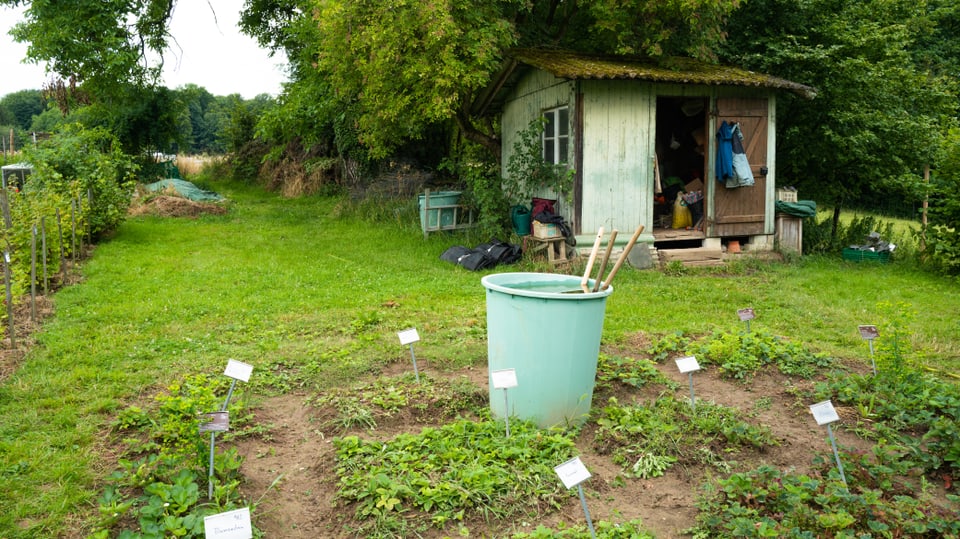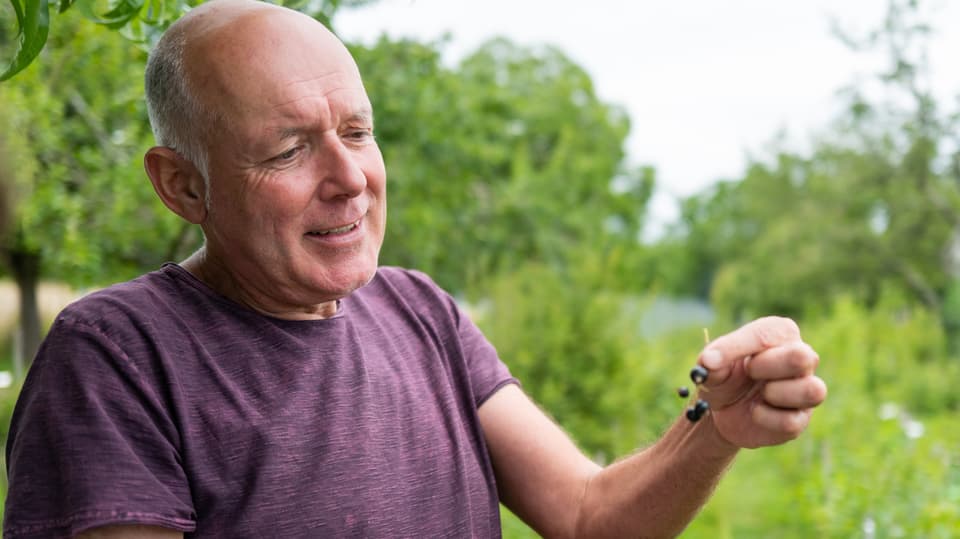Contents
Biologist Martin Frei from Basel owns over 600 different berries. He cultivates old and rare varieties.
Martin Frei has not gone on vacation for many years. Biology can hardly afford that: Who then takes care of its berries?
Legend:
The biologist Martin Frei has loved berries since he was a student – especially those that used to be eaten a lot and are hardly known any more.
ZVG/Dominik Ash
Frei has hundreds of sticks with different berries. His focus is on old varieties, i.e. on berries that are hardly available today – white strawberries, for example, or black raspberries.
Or a particularly interesting currant. Frei takes one of them and proudly says: “It’s a Red Dutchman and she can be seen on old church paintings.” The Red Dutch has special “narrow-pointed” leaves, which can be clearly seen in pictures. “You can already see these berries in pictures from the 16th century.” It is probably the oldest berry variety in his collection and also the oldest currant known to the “Pro Specie Rara” organization.
It started as a summer job
There are now 600 berry varieties that Frei has cultivated in his berry garden in Riehen near Basel over the past 25 years. He has the largest collection of berries in Switzerland. The federal government and “Pro Specie Rara”, which support Frei, have also become aware of this. According to the organization, the garden in Riehen is “a unique collection”.
Martin Frei’s enthusiasm for berries started when he was still studying. At the time, he had a student job, helping to plant old berry varieties in a garden.

Legend:
The collection in Riehen is spread over various private properties. Since 1997, old and rare varieties have been systematically recorded and cultivated.
ZVG/Dominik Ash
The enthusiasm for special berry varieties has been dormant in him ever since. When, years after his student job, he found out that someone was dissolving a collection of old berries, he pricked up his ears. “We drove down and ate our way through the berries.” Later he was allowed to dig up the sticks and plant them in his home. He planted 50 varieties of gooseberries, thereby laying the foundation for his own collection.
Hardly any literature on old varieties
The old berry varieties and the berry garden in Riehen were popular with older people for many years, says Frei. But that has changed: “Now the audience is mixed. There are also young people.” And among the visitors there are also researchers and gourmet chefs. “There is hardly any literature about old berry varieties.” That’s why all those who want to learn more about old varieties come to his garden.
However, access to berries is by no means only of an intellectual nature, not even for scientists: many people come and do what Martin Frei himself did 25 years ago in the berry garden: they eat their way through all sorts of berries.
